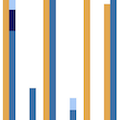Abstract
Background: Skilled nursing facilities (SNFs) are high-risk settings for SARS-CoV-2 transmission. Infection rates among employees are infrequently described.
Objective: To describe SARS-CoV-2 rates among SNF employees and residents during a non-outbreak time period, we measured cross-sectional SARS-CoV-2 prevalence across multiple sites in the Seattle area.
Design: SARS-CoV-2 testing was performed for SNF employees and residents using quantitative real-time reverse transcription polymerase chain reaction. A subset of employees completed a sociodemographic and symptom questionnaire.
Participants: Between March 29 and May 13, 2020, we tested 1583 employees and 1208 residents at 16 SNFs for SARS-CoV-2.
Main Measure: SARS-CoV-2 testing results and symptom report among employees and residents.
Key Results: Eleven of the 16 SNFs had one or more resident or employee test positive. Overall, 46 (2.9%) employees had positive or inconclusive testing for SARS-CoV-2, and among those who completed surveys, most were asymptomatic and involved in direct patient care. The majority of employees tested were female (934, 73%), and most employees were Asian (392, 30%), Black (360, 28%), or white (360, 28%). Among the 1208 residents tested, 110 (9.1%) had positive or inconclusive results. There was no association between the presence of positive residents and positive employees within a SNF (p = 0.62, McNemar’s test).
Conclusions: In the largest study of SNFs to date, SARS-CoV-2 infections were detected among both employees and residents. Employees testing positive were often asymptomatic and involved in direct patient care. Surveillance testing is needed for SNF employees and residents during the pandemic response.
